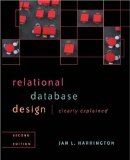Difference Between DBMS and RDBMS
 Data is the most important aspect in computing. Any program, whether big or small, needs data in order to process and produce its output; which often is some sort of data. Storing data has evolved a lot over the last few years. The first method of storing data before was in text files. This waw very inefficient and very difficult to deal with especially when dealing with larger amounts of data.
Data is the most important aspect in computing. Any program, whether big or small, needs data in order to process and produce its output; which often is some sort of data. Storing data has evolved a lot over the last few years. The first method of storing data before was in text files. This waw very inefficient and very difficult to deal with especially when dealing with larger amounts of data.
With the need for better means for storing and retrieving data, the DBMS (Database Management System) was created. A DBMS stores data in a table where the entries are filed under a specific category and are properly indexed. This allowed programmers to have a lot more structure when saving or retrieving data. It is also a whole lot easier to search a certain database for the data you want. DBMS also provides search functionalities in order to find a certain database entry. Once it is found, you can then pull out any other related information from that entry. DBMS is a very competent system for keeping track of data, but it doesn’t scale very well. Dealing with huge databases, although possible, becomes a huge chore in DBMS.
To cope with this roadblock, the RDBMS or Relational DBMS is developed. A relational database contains data in more than one table. Each table contains a database that is then linked to other tables with respect to their relationships. This is best explained with an example. Let’s say that you have a car repair business that you want to build a database for, you would need a list of your clients and the cars that they own. It might be a little bit more complex if implemented in DBMS but with RDBMS you can do it with ease. You can build two tables, one for the clients and one for the cars and then link them to each other. With that, you can easily pull a client’s information then which cars they own.
RDBMS is an improvement over the older DBMS. It provides the mechanism to overcome the restrictions that DBMS faces. Furthermore, the programmer doesn’t really have that much to learn when converting from DBMS to RDBMS. You can even stick to the old DBMS format if you really want to and stick all the data into a single table. Even if you still have no need for RDBMS, it might make sense to start converting your programs into it in case you would need to.
![]()
Find more information on DBMS and RDMS.
- Difference Between Sony Cybershot S Series and W Series - December 22, 2012
- Difference Between Samsung Galaxy S3 and iPhone 5 - December 21, 2012
- Difference Between Samsung Galaxy S2 (Galaxy S II) and Galaxy S 4G - December 20, 2012
